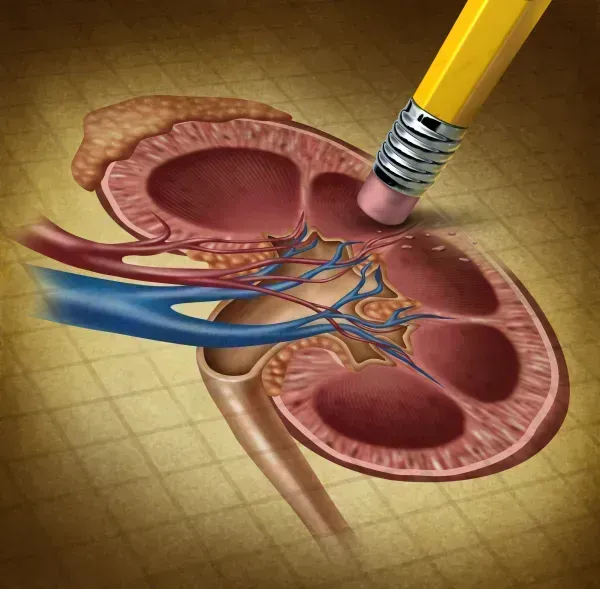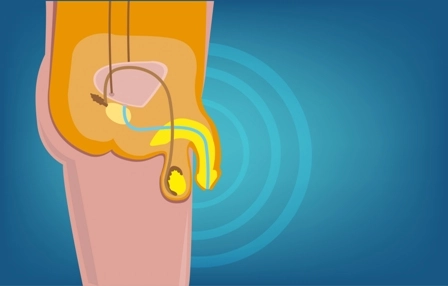Urology Coding Alert
Site of Service Can Change the Cysto Code
Question: A patient complained of gross hematuria over the past month, seeing actual blood clots. Urinalysis was positive for UTI and TNTC RBCs. He was treated with antibiotics for the UTI, and the hematuria cleared somewhat. He is now having recurrent bleeding but a CT scan gave no etiology for the gross hematuria. The scan did show an enlarged prostate. Nocturia has improved with medication. He underwent a cystoscopic examination, during which the surgeon used an Ellik device to evacuate multiple obstructing blood clots from the bladder. The surgeon then used rollerball cautery to fulgurate bleeding from the bladder neck and prostatic urethral vasculature. The physician documented enlarged prostate with obstruction, some median hypertrophy and vascularity. What procedure and diagnosis codes would be correct?
Montana Subscriber
Answer: Begin by coding the surgery as:
-
52001-59 (Cystourethroscopy with irrigation and evacuation of multiple obstructing clots) with modifier 59 (Distinct procedural service) and
-
52214 (Cystourethroscopy, with fulguration [including cryosurgery or laser surgery] of trigone, bladder neck, prostatic fossa, urethra, or periurethral glands).
Although 52001 is bundled into 52214, in a hospital setting 52001 has higher relative value units (RVUs) than 52214 and therefore, should be billed first. Append modifier 59 to 52001 for non-Medicare payers or modifier XU (Unusual non-overlapping service) for Medicare to differentiate the services.
The principal diagnosis should be N42.1 (Congestion and hemorrhage of prostate).
Related Articles
Urology Coding Alert
- Imaging Procedures:
Refresh Your Knowledge of Renal Imaging
Start by distinguishing ‘complete’ from ‘limited.’ Physicians use renal ultrasounds to assess the size, shape, [...] - Terminology Refresher:
Take Note of How 'Ultrasound' and 'Sonogram' Relate
Interchanging the terms doesn’t mean they’re the same. The terms “ultrasound” and “sonogram” are used [...] - Modifier Update:
Remember 3 Things About Modifier 52 on Your Claims
Let these examples guide your usage. Appending modifier 52 (Reduced services) can be appropriate for [...] - ICD-10:
Get Specific With the Reason for Urine Retention
Plus: Pay attention to your extra diagnosis choice. When selecting an ICD-10 diagnostic code for [...] - Reader Question:
Check Whether You Can Unbundle 50240 and 60540
Question: The surgeon performed a left adrenalectomy and partial upper pole nephrectomy on a patient whose [...] - Reader Question:
Verify Abscess Location Before Choosing Between 54700 and 55100
Question: A patient was treated in our office for a scrotal abscess. The surgeon incised an [...] - Reader Question:
Site of Service Can Change the Cysto Code
Question: A patient complained of gross hematuria over the past month, seeing actual blood clots. Urinalysis [...] - Reader Question:
Let the Approach Determine UPJ Scar Incision Code
Question: How should I code for an incision of a UPJ scar due to ureteral stricture? [...] - Reader Question:
Work of 51595 Includes a Bilateral Pelvic Lymphadenectomy
Question: My physician performed a complete cystectomy for which I know we can file with 51595. [...] - Reader Question:
Pathology Doesn't Affect 52234-52240 Selection
Question: Does the pathology report have to be positive for malignancy before we can report CPT® [...] - Reader Question:
Understand When Two-Factor Authorization Comes Into Play
Question: I’ve heard about “two-factor authorization” but don’t know exactly what it is or how we [...] - Reader Question:
Count Numbers and Time to Determine Wart Removal Code
Question: Our urologist performed excision and electro-cauterization of multiple genital warts under local anesthesia. The warts [...] - Reader Question:
Remind Physicians of the Latest Signature Requirements
Question: Most of our physicians are very cooperative about all of their documentation, but I have [...] - You Be the Coder:
Coding for Pouchoscopy and Ureteral Stent Removal
Question: What is the best way to code for pouchoscopy with removal of a right ureteral [...]




